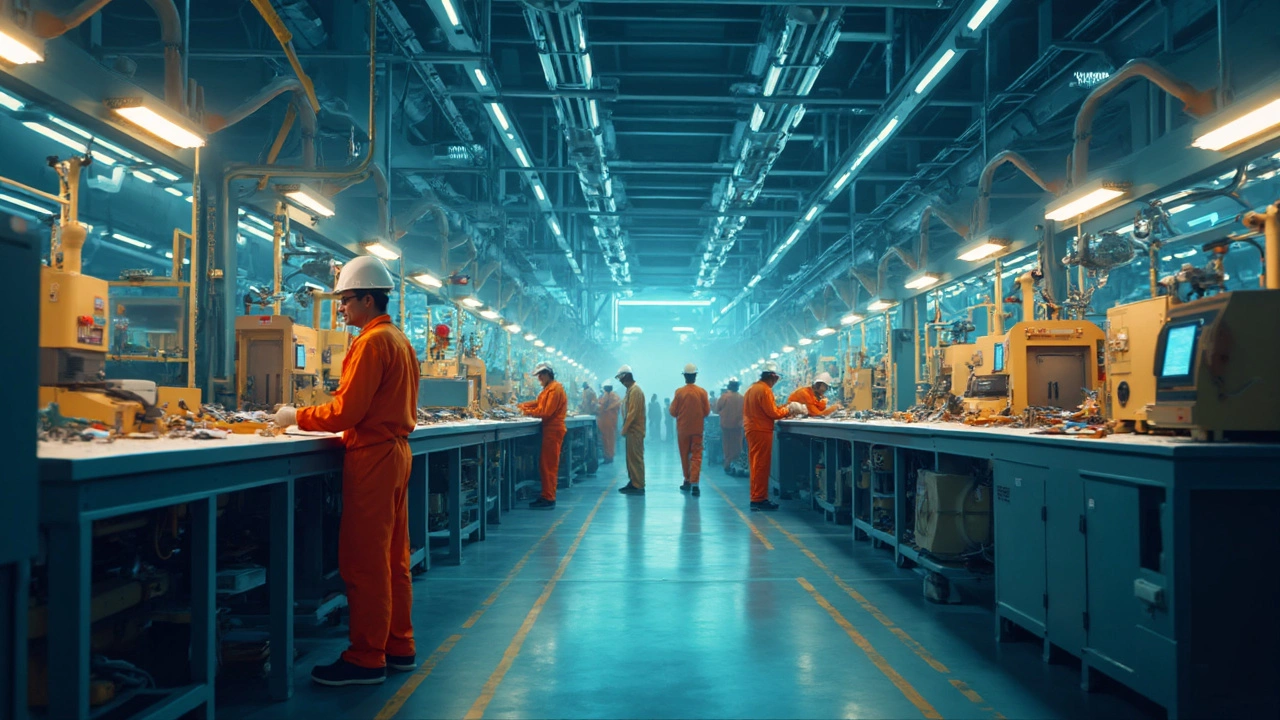Manufacturing System: Fundamentals, Trends, and Real‑World Impact
When talking about manufacturing system, the integrated network of processes, equipment, people and software that turn raw materials into finished goods. Also known as production system, it manufacturing system connects everything from design to delivery. A modern manufacturing system encompasses production processes, quality control, logistics, and data analytics, forming the backbone of sectors ranging from automotive to pharmaceuticals.
One of the most powerful sub‑components is lean manufacturing, a methodology that focuses on minimizing waste while maximizing value. Lean principles influence the overall manufacturing system by streamlining workflows, reducing inventory, and improving cycle times. Another critical driver is automation, the use of robots, programmable logic controllers, and AI‑powered software to perform repetitive tasks. Automation requires precise coordination with the manufacturing system, enabling consistent quality and higher throughput without a proportional rise in labor costs.
But a system is only as strong as its links to the outside world. supply chain management, the planning and execution of material flow from suppliers to factories and beyond connects raw material sourcing to the manufacturing system, ensuring that the right components arrive at the right time. When supply chain visibility aligns with production schedules, factories can avoid costly downtime and keep inventory lean. Together, these entities create a feedback loop: better supply chain data fuels smarter automation, which in turn reinforces lean practices.
Key Elements Shaping Today’s Manufacturing Systems
Across the articles on this page you’ll see how these concepts play out in real industries. For instance, the rise of industrial robotics is reshaping the Indian semiconductor manufacturing scene, where precision and speed matter more than ever. The push for greener steel production at Gary Works shows how automation and lean methods can coexist with environmental goals. In the consumer space, the most sold product on Earth illustrates how massive manufacturing systems handle scale, relying on tight supply chain coordination and automated assembly lines.
Understanding the types of manufacturing methods is also crucial. The classic five‑type framework—batch, discrete, continuous, process, and cell production—still guides plant layouts, but many companies now blend them with digital twins and IoT sensors. This hybrid approach lets a manufacturing system adapt on the fly, a key advantage in fast‑moving markets like plastic and chemical manufacturing where product specs change frequently.
Profitability remains a top concern. Data from 2025 shows that manufacturers who embed lean principles and high‑level automation tend to achieve double‑digit margins, even in traditionally low‑margin sectors like textiles. Conversely, firms that overlook supply chain risks often face margin erosion, especially when global disruptions affect raw material prices.
All these threads tie back to the core idea: a manufacturing system is a living, breathing ecosystem. Whether you’re planning a startup with a new product idea, evaluating the best US state for low‑cost production, or exploring why Indian cars carry a heavy price tag, the same set of principles applies. Below, you’ll find articles that dive deep into each facet—product development, sector‑specific case studies, profitability analyses, and step‑by‑step guides—giving you practical insights you can act on right away.
